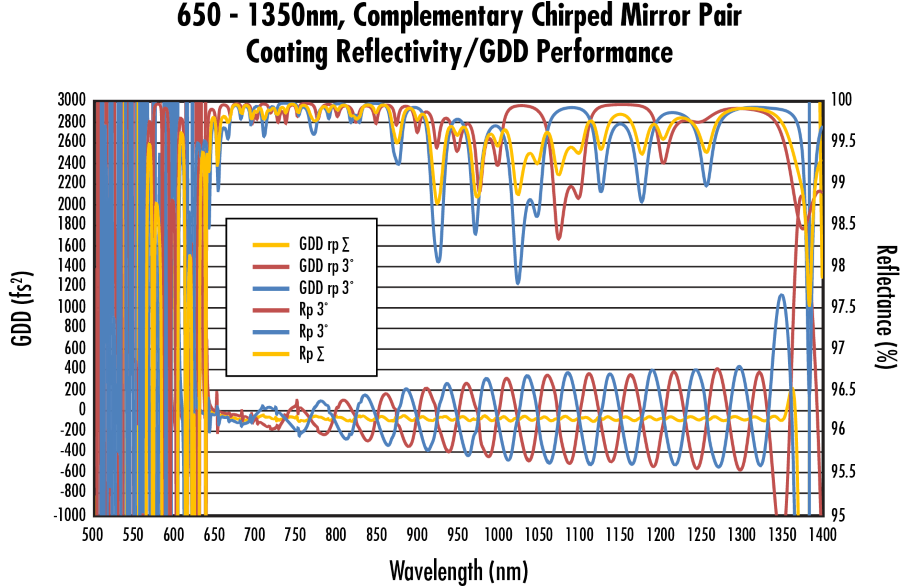
UltraFast Innovations (UFI) Ultra-Broadband Complementary Chirped Mirror Pairs are designed to provide dispersion compensation for ultrafast pulses. The matched mirrors feature out-of-phase group delay dispersion (GDD) oscillations leading to a near-constant GDD performance with minimal oscillations. The broadband coating design covers the most common ultrafast laser lines, including Ti:sapphire and Yb:doped fiber, providing negative GDDs as low as -60fs2 and average reflectance of >99% (p-polarization) at 600 – 950nm or 650 – 1350nm. The narrow angles of incidence (AOI) allows many reflections of the ultrafast pulse to effectively compensate for dispersion effects. UFI Ultra-Broadband Complementary Chirped Mirror Pairs are ideal for dispersion compensation in ultrafast laser applications, including chirped-pulse amplifier systems and ultra-broadband laser oscillators. Please contact us for custom mirror pairs with different geometries, bandwidths, or spectral specifications.
Note: Complementary Chirped Mirror Pairs are sold in pairs.

Edmund Optics offers comprehensive custom manufacturing services for optical and imaging components tailored to your specific application requirements. Whether in the prototyping phase or preparing for full-scale production, we provide flexible solutions to meet your needs. Our experienced engineers are here to assist—from concept to completion.
Our capabilities include:
Learn more about our custom manufacturing capabilities or submit an inquiry here.
or view regional numbers
QUOTE TOOL
enter stock numbers to begin
Copyright 2023, Edmund Optics India Private Limited, #267, Greystone Building, Second Floor, 6th Cross Rd, Binnamangala, Stage 1, Indiranagar, Bengaluru, Karnataka, India 560038
California Consumer Privacy Acts (CCPA): Do Not Sell or Share My Personal Information
California Transparency in Supply Chains Act
The FUTURE Depends On Optics®